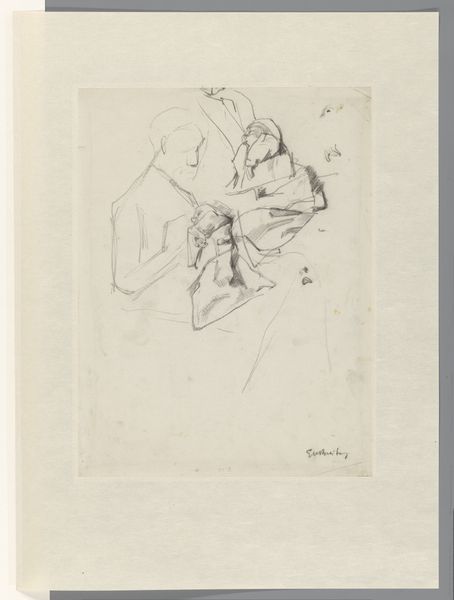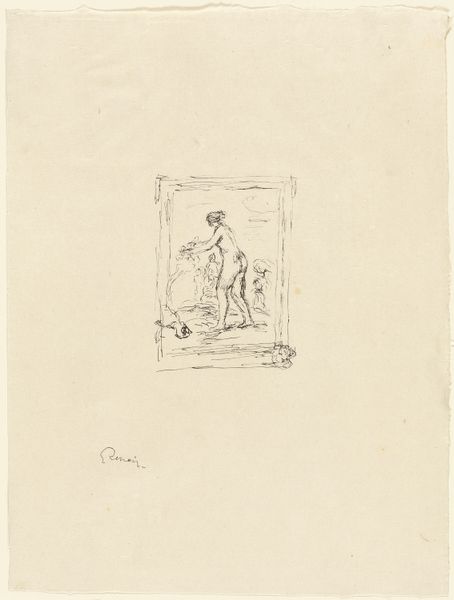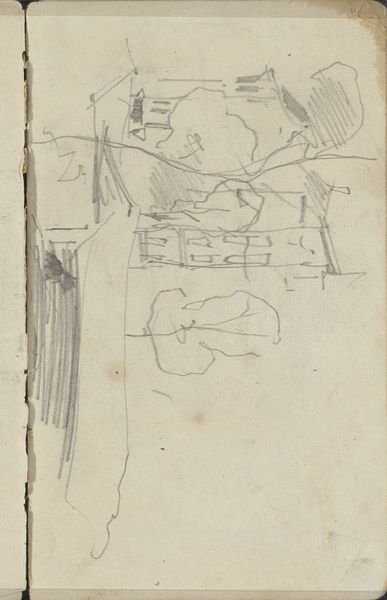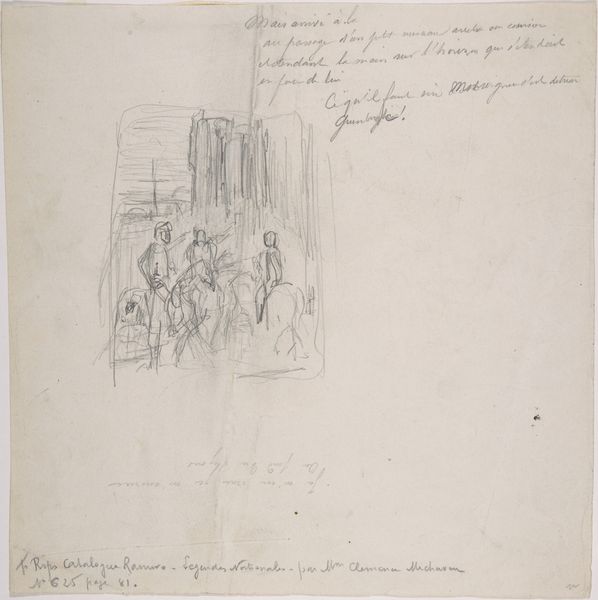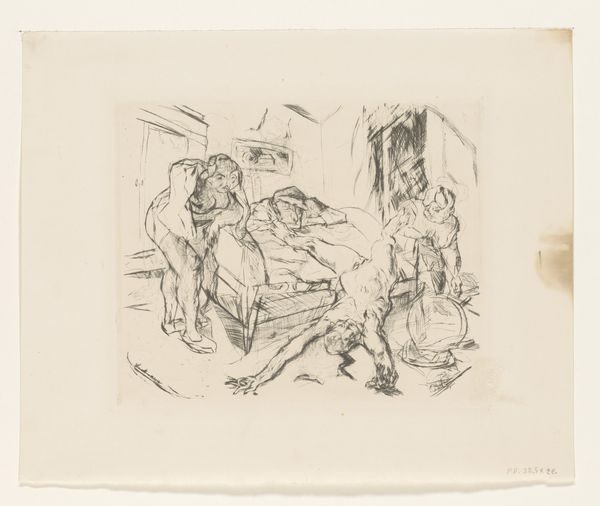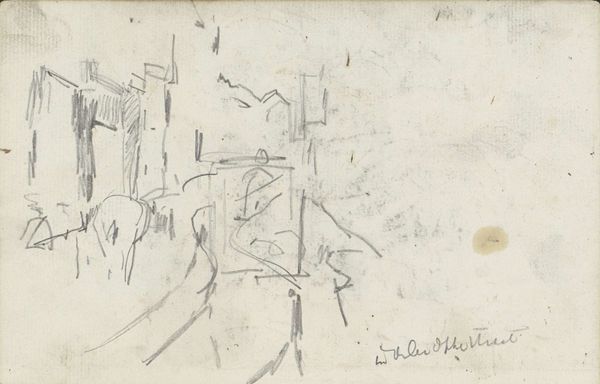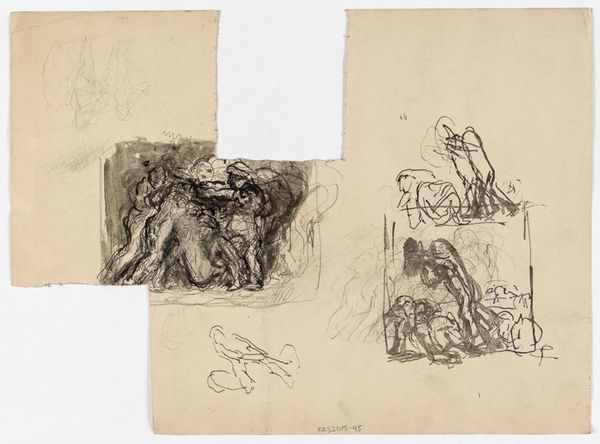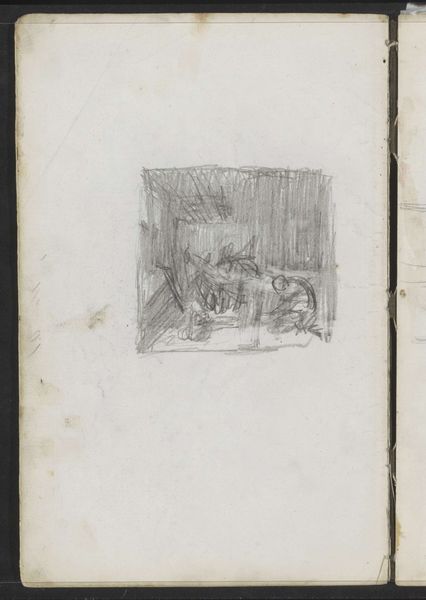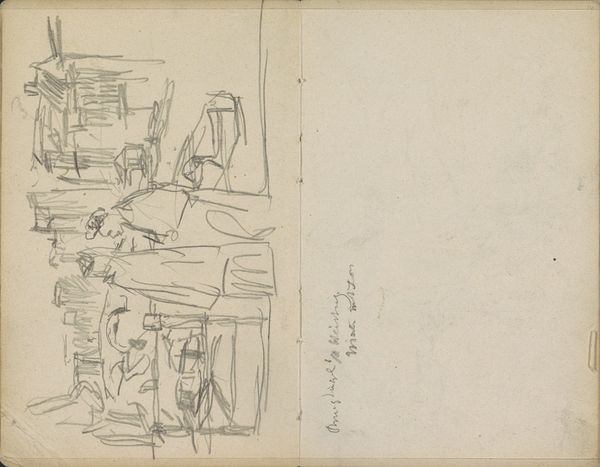
Siddende vinget genius, i baggrunden træer; i højre side et karikeret hoved 1743 - 1809
0:00
0:00
Dimensions: 261 mm (height) x 171 mm (width) (bladmaal)
Curator: Nicolai Abildgaard, a key figure in Danish Romanticism, created this ink and pencil drawing sometime between 1743 and 1809. It’s called "Siddende vinget genius, i baggrunden træer; i højre side et karikeret hoved"—or, in English, "Seated winged genius, trees in the background; a caricatured head on the right side." Editor: My initial response is that this piece feels wonderfully incomplete and exploratory. The figure of the winged genius is delicately rendered, whereas the other elements are much more gestural, like studies or afterthoughts on the same page. It’s like we're seeing a window into the artist’s creative process. Curator: Absolutely. Abildgaard was deeply engaged with Neoclassical ideals and used historical and mythological themes to explore philosophical concepts. We see that here, but perhaps filtered through a Romantic sensibility, making it a meditation on intellectual power. Editor: The choice of ink and pencil on paper definitely contributes to that. Ink allows for controlled, precise lines for the figure, really emphasizing form and structure, whereas pencil lends itself to the rapid sketching of ideas. I'm thinking about the labor, the different types of hand movements needed to make a piece like this and the economic factors to getting these materials. Curator: That’s a good point. Consider the caricature: why place it on the same plane as an allegorical figure? I would suggest that Abildgaard is consciously blurring the lines between the ideal and the everyday, questioning traditional hierarchies, and it's worth adding he created the sketches within the Danish Royal collection. Editor: So you're saying the materials and their use are reflective of Abildgaard’s challenge to conventions in this period? By combining these approaches and themes he is almost performing a deconstruction of established forms right there on the paper. Curator: Precisely. The loose sketches surrounding the figure seem to hint that Abildgaard seeks the philosophical liberation that was to be so important in the Romantic movement, hinting toward internal experience and self-discovery through art. The artist creates the possibility of art offering a personal space to challenge, as well as depict, authority. Editor: Well, by focusing on materials and their social context, my view gives space for labor as a way to expand this idea of space. In this way, the piece allows a lens to view labor and access through the history we view it in. Curator: A perspective that adds an essential layer of understanding! The tension within this deceptively simple sketch reflects not just artistic struggle, but a deeper socio-political negotiation—a constant balancing act within his role.
Comments
No comments
Be the first to comment and join the conversation on the ultimate creative platform.
